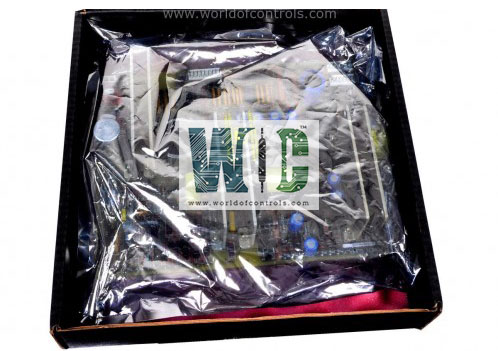
World Of Controls understands the criticality of your requirement and works towards reducing the lead time as much as possible.
IC697CPU788 - 32-bit Programmable Logic Controller is available in stock which ships the same day.
IC697CPU788 - 32-bit Programmable Logic Controller comes in UNUSED as well as REBUILT condition.
To avail our best deals for IC697CPU788 - 32-bit Programmable Logic Controller, contact us and we will get back to you within 24 hours.
Part No.: IC697CPU788
Manufacturer: General Electric
Product Type: Programmable Logic Controller Module
Module Type Expandable CPU (Triple Redundancy)
Number of Slots: 1 (Single slot)
Current Required: 1.6 Amps
Number of Points: 352 discrete inputs and outputs (any mix)
Serial Ports: One
Supports: IC660/IC661 I/O and IC697 I/O
Availability: In Stock
Series: VersaMax
IC697CPU788 is a Programmable Logic Controller Module developed by GE. It is a 32-bit Programmable Logic Controller (PLC) module developed by GE Automation. It is designed to operate in critical environments, such as those in IC660/661 systems, where reliable control and emergency shutdown capabilities are essential. It supports Triple Modular Redundancy (TMR) when used with C program blocks, ensuring high availability and fault tolerance in mission-critical applications.
This flexibility allows for easy configuration and operation either on-site or remotely.
Upon powering up, the top LED will blink during diagnostics. Once the diagnostics are complete, the top LED will remain on, signaling that the module is ready for programming.
It requires an expansion memory board for operation, providing 512 Kbytes of CMOS RAM. About 200 Kbytes of this memory is allocated for the user application program and data, while the remaining space supports system-level operations.
The status can be monitored via four green LEDs on the front of the module:
The LED indicators help users track system performance, module status, and operational mode.
For full functionality, requires the installation of a CMOS RAM expansion memory board. The expansion memory provides an additional 512 Kbytes of storage, supporting user applications and ensuring robust operation in complex systems. A battery-backed CMOS memory ensures data persistence, even in the event of power interruptions.
Programming is done using a computer connected via parallel (MS-DOS) or serial interface, with configuration software available for Windows 95/NT. The configuration process is streamlined, eliminating the need for jumpers or DIP switches. It also supports Ethernet interfaces when special hardware is in place for more advanced setups.
The WOC team is always available to help you with your Mark I and II requirements. For more information, please contact WOC.
What is IC697CPU788?
It is a Programmable Logic Controller Module developed by GE under the VersaMax series.
What do the LED indicators on the PLC mean?
Top LED Indicates operational status (blinks during diagnostics and remains on when ready). Second and Third LEDs Show specific operational states. Fourth LED Signals whether the configuration protection switch is in the OFF position.
What is the role of the CMOS expansion memory board?
The CMOS expansion memory board is required for full operation of the IC697CPU788. It provides an additional 512 Kbytes of CMOS RAM, which supports user applications and ensures data persistence with a battery-backed system.
What programming software is used for the PLC?
Programming and configuration of the PLC are done using programming software compatible with MS-DOS or Windows 95/NT. The connection to the PLC can be made via serial, parallel, or Ethernet (with appropriate hardware).
How is the PLC integrated into a system?
The PLC integrates into a system through its backplane-mounted rack, which allows communication with I/O modules and other devices. It is ideal for applications requiring high reliability and fault tolerance, such as Triple Modular Redundancy (TMR) environments.